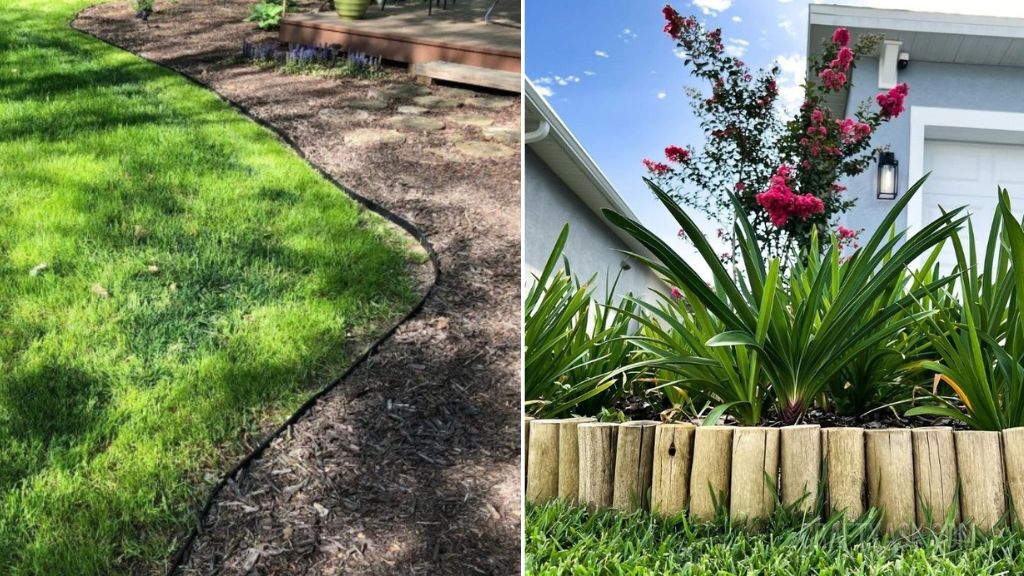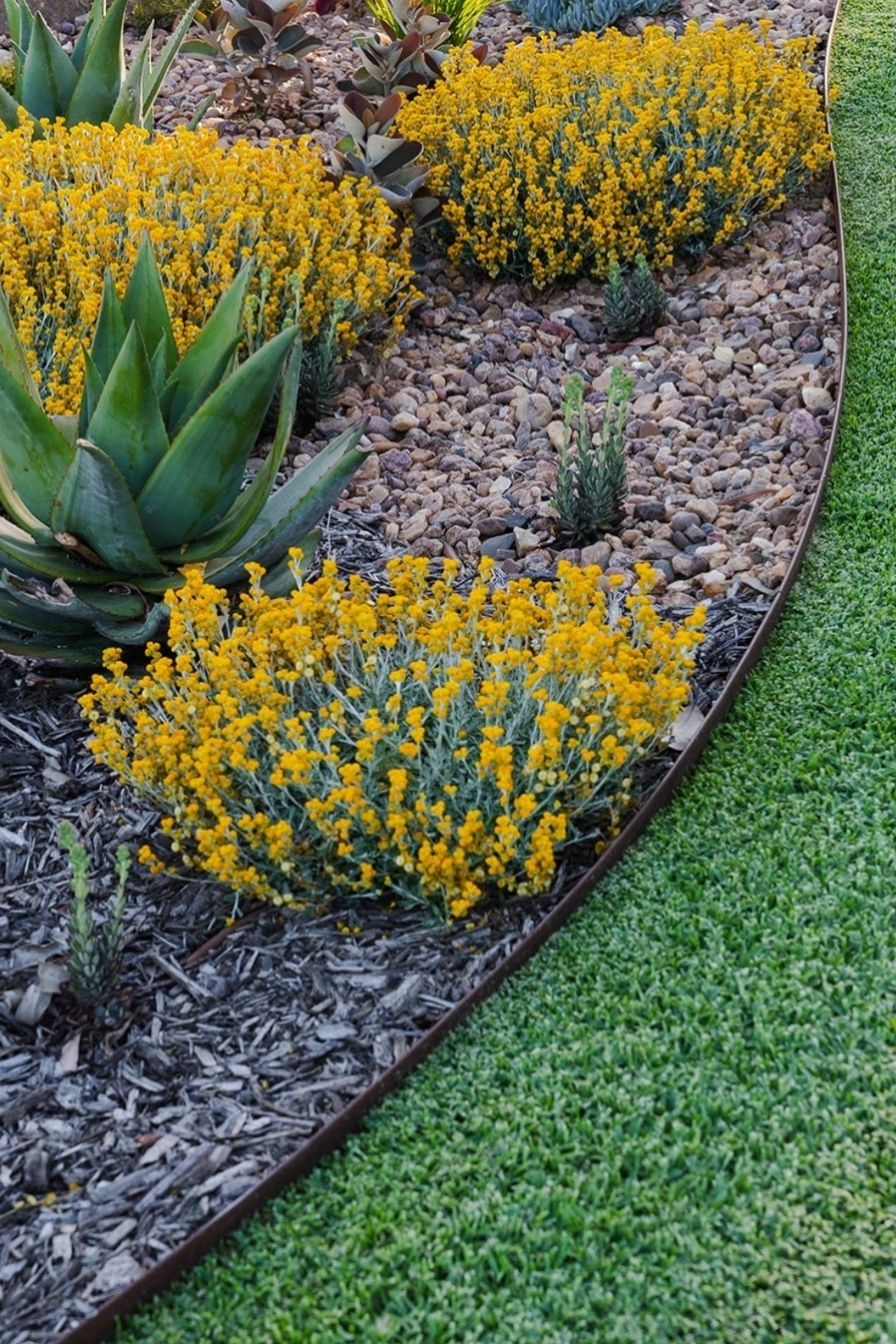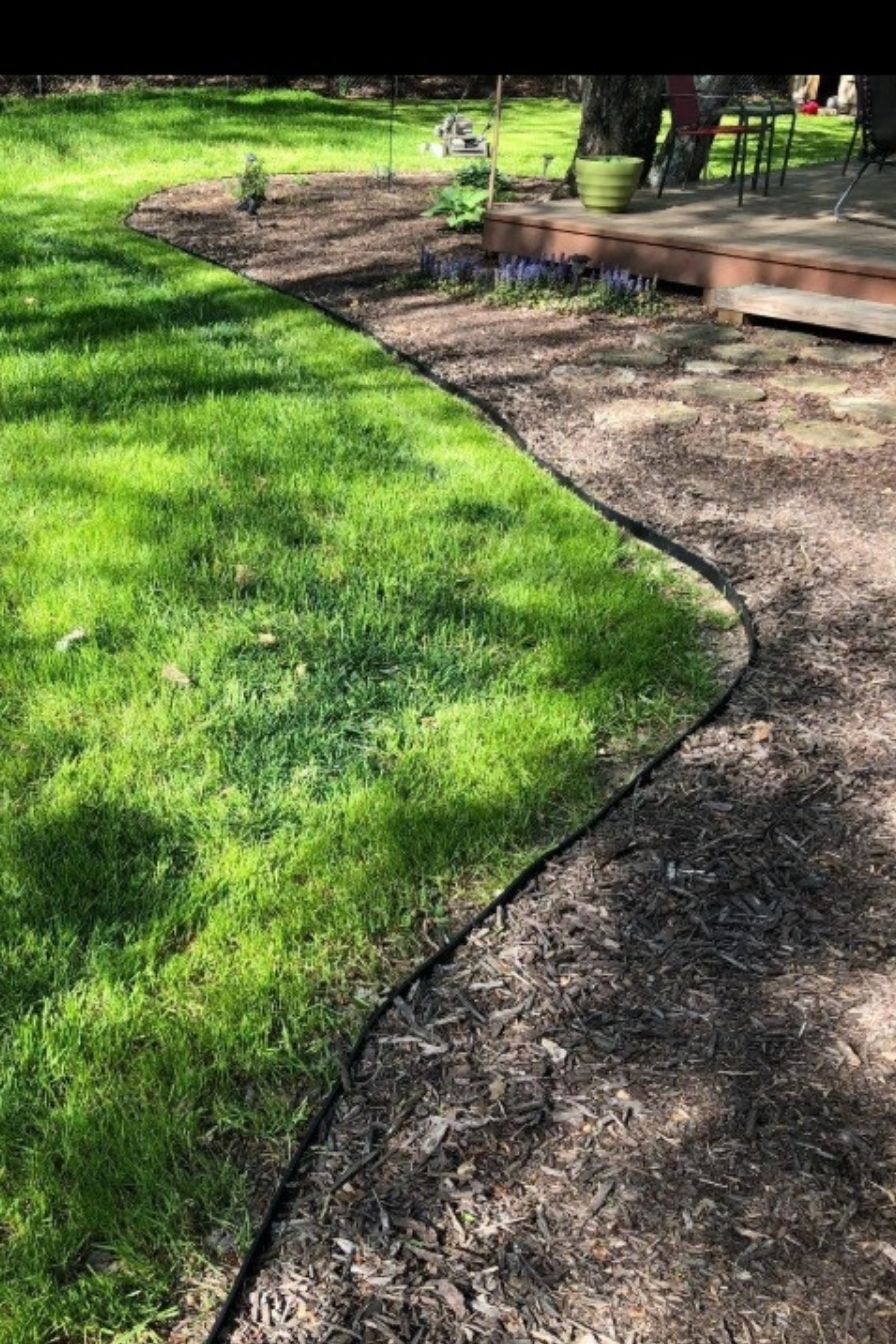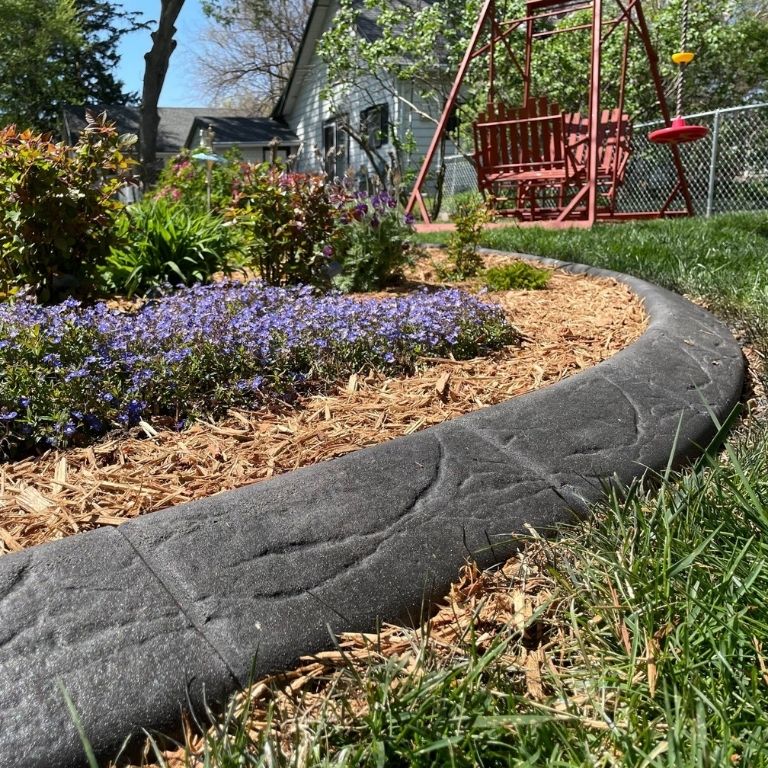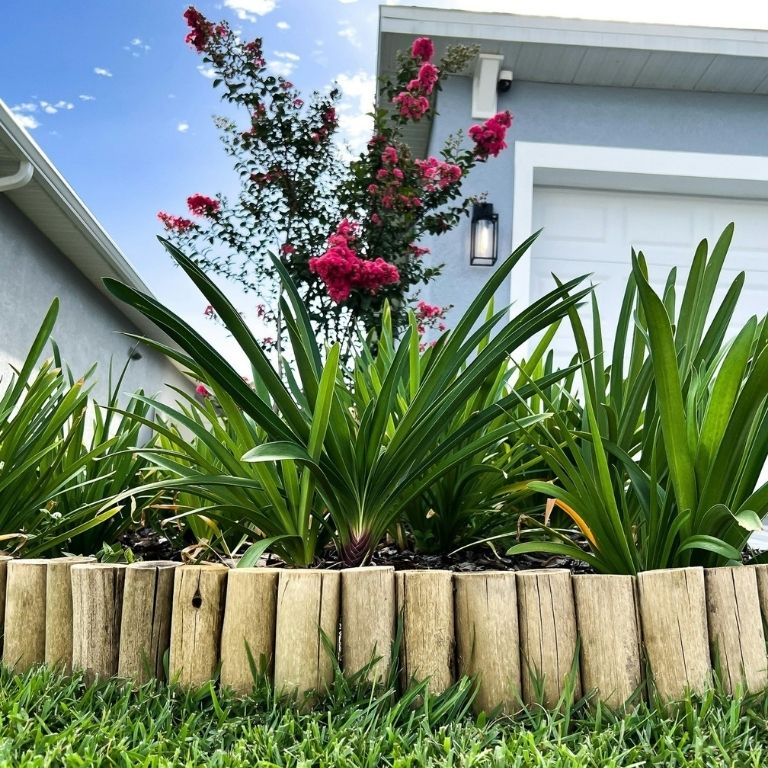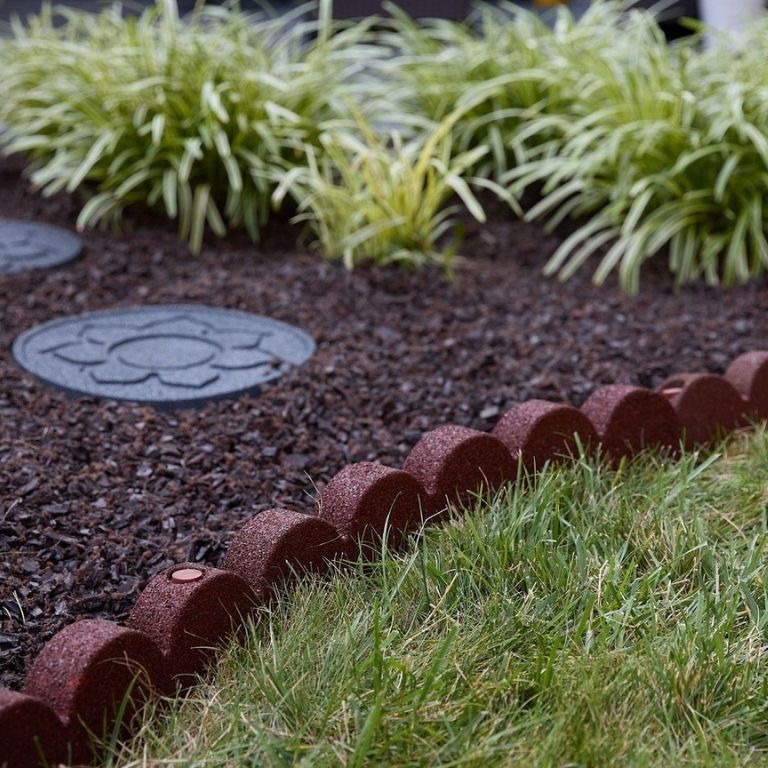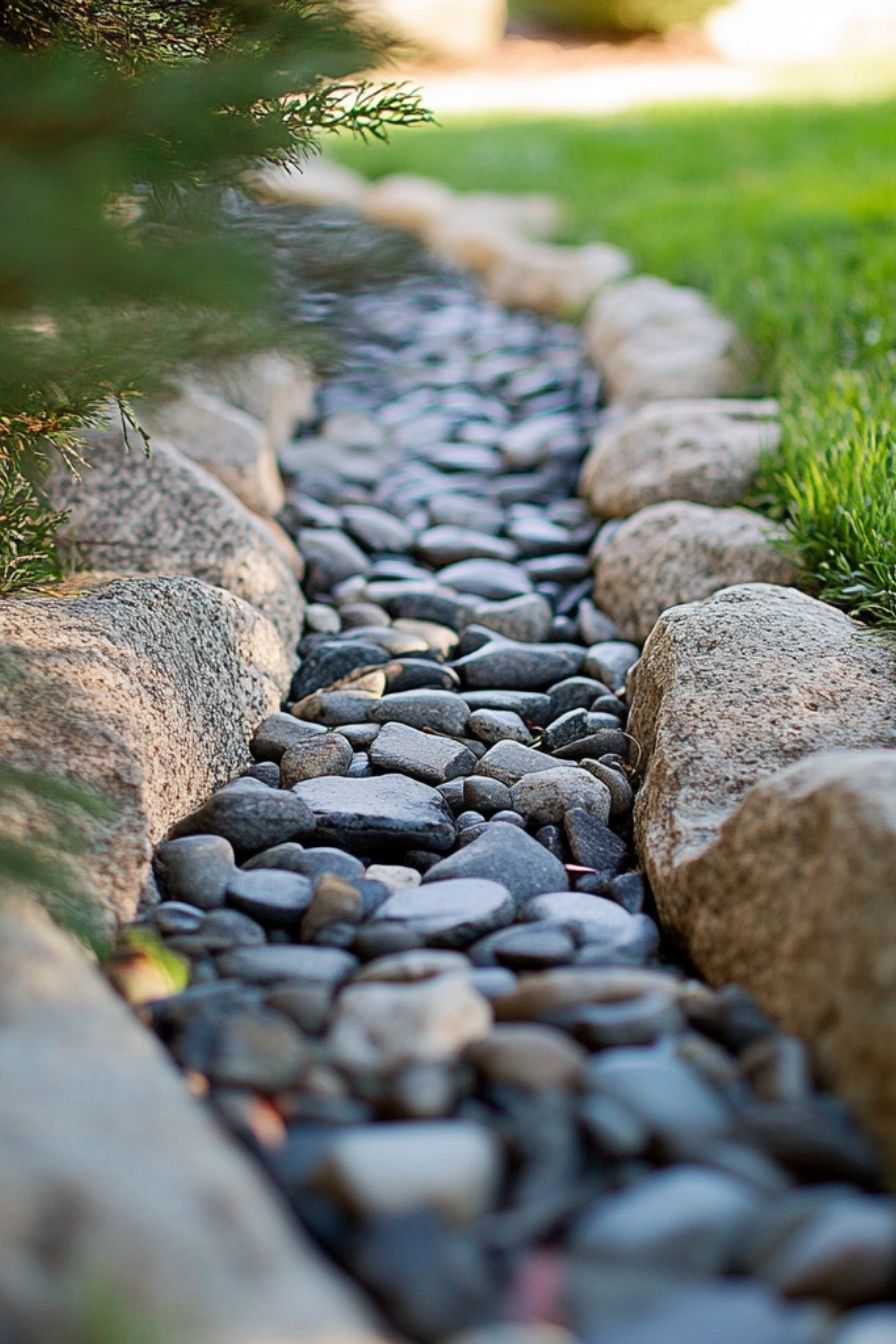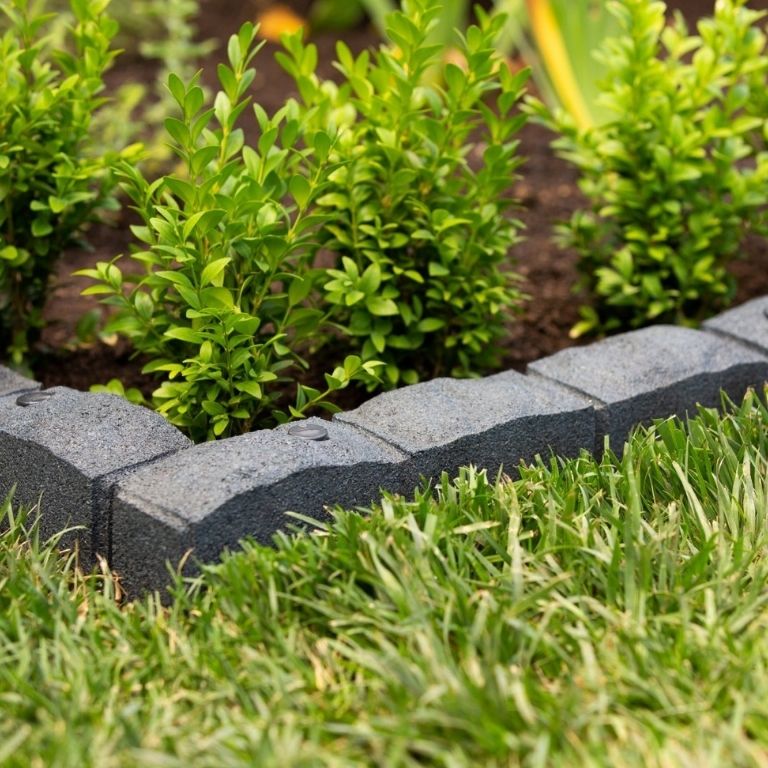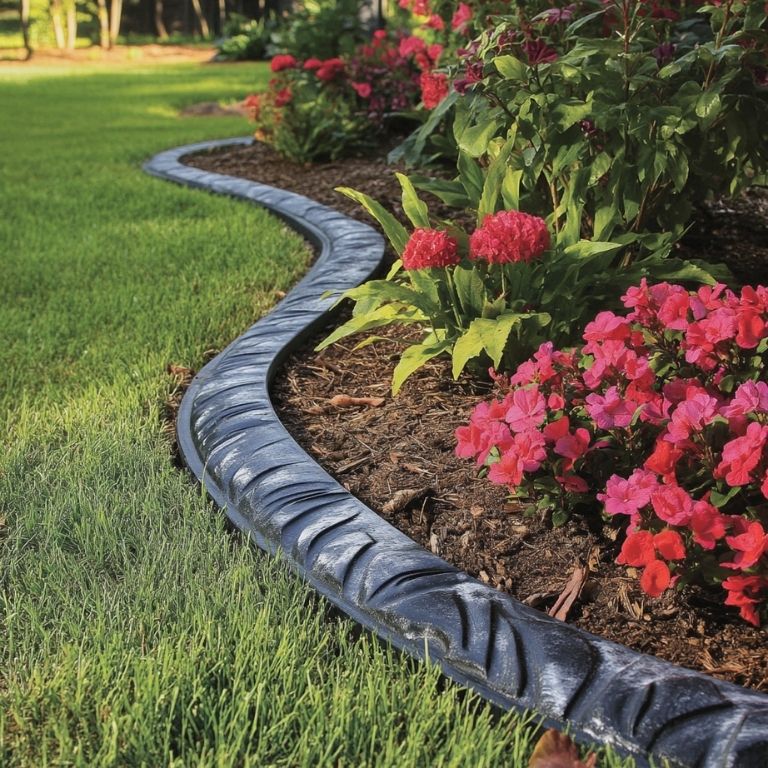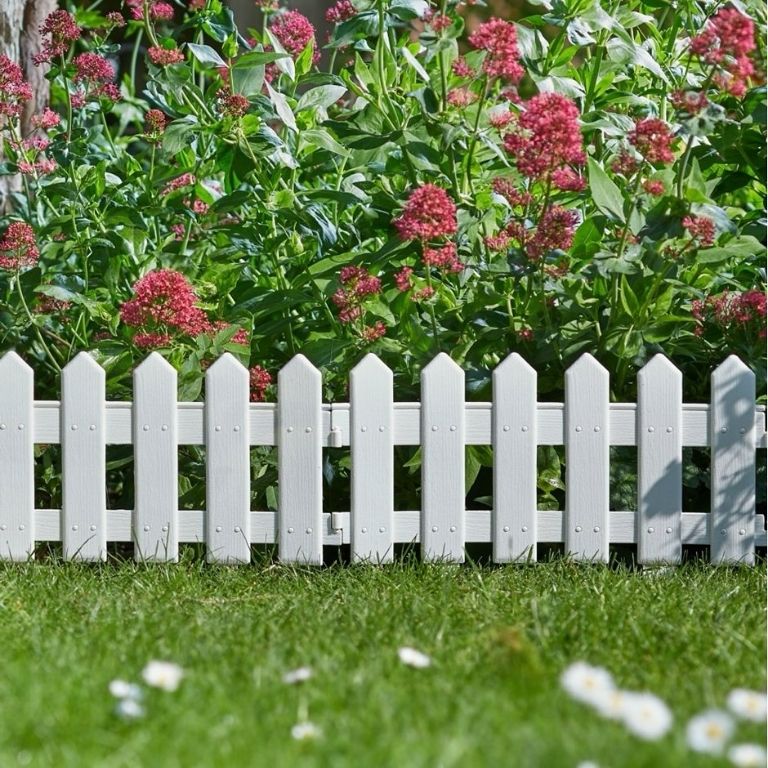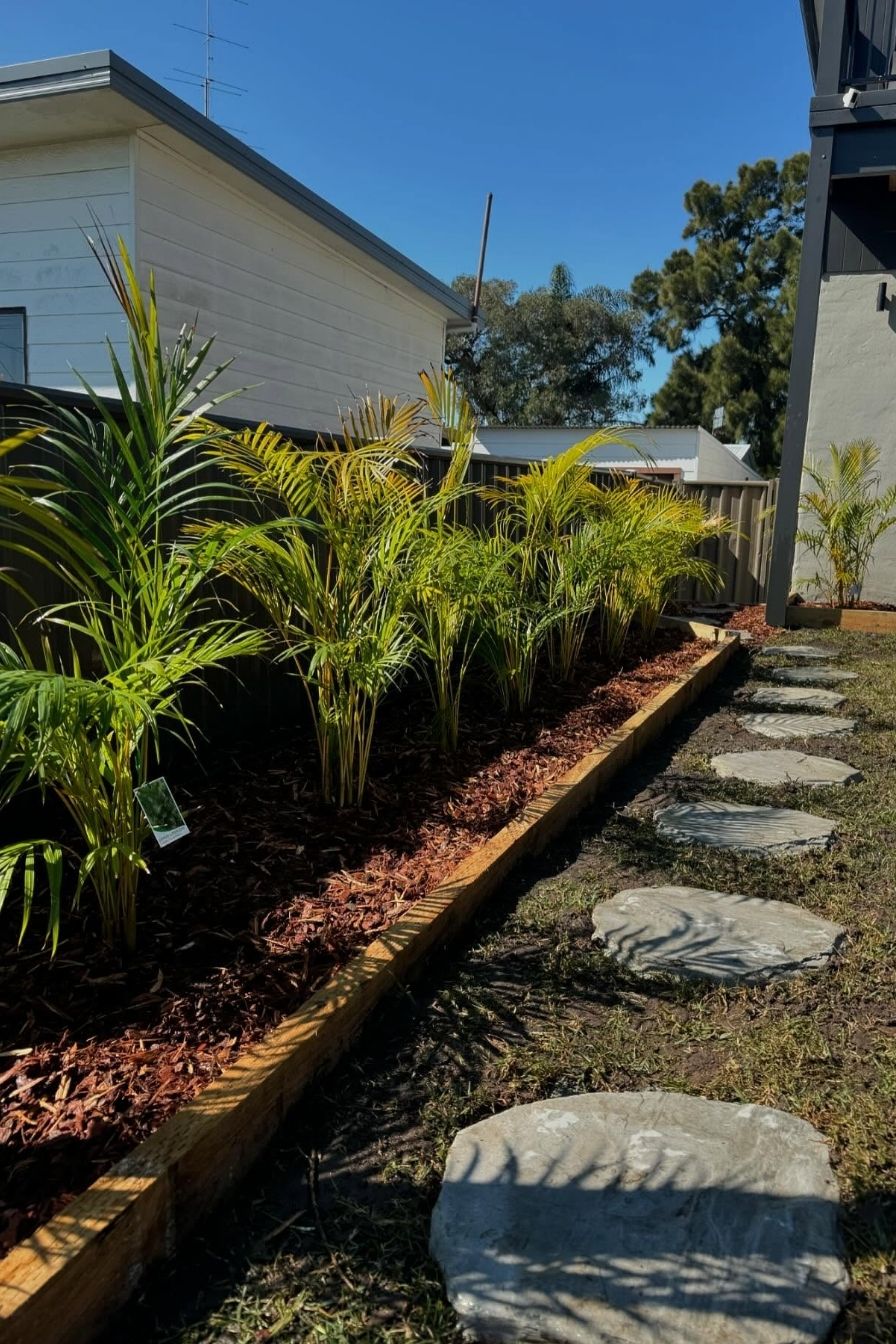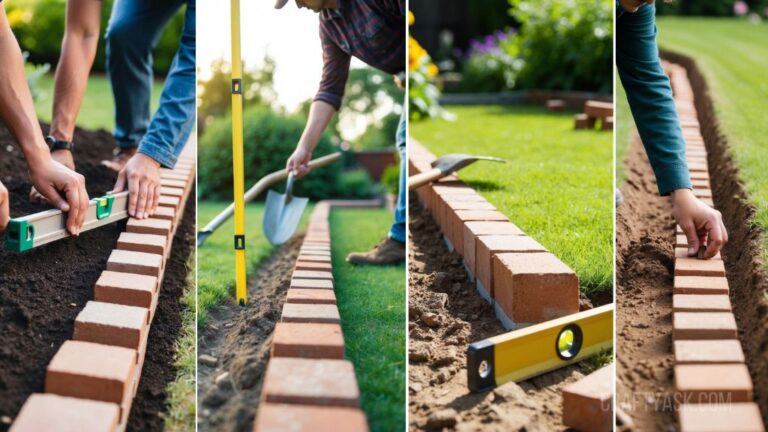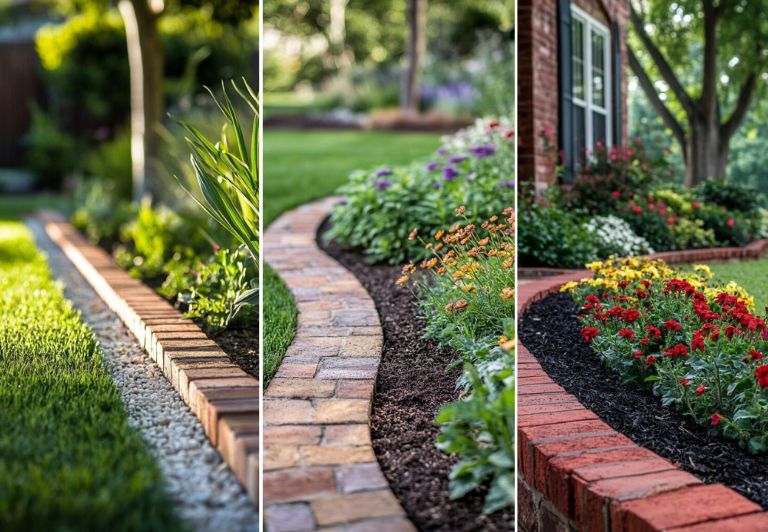14+ Lawn Edging Ideas To Keep Grass Out!
Keeping a tidy yard isn’t always easy, especially when grass keeps sneaking into flower beds and garden spaces. That overgrown look just makes everything harder, and honestly, it’s a bit of an eyesore.
Picking the right lawn edging can really help keep grass out and give your landscape a crisp, defined look.
With a bit of effort, your yard can look neater and stay that way through the seasons.
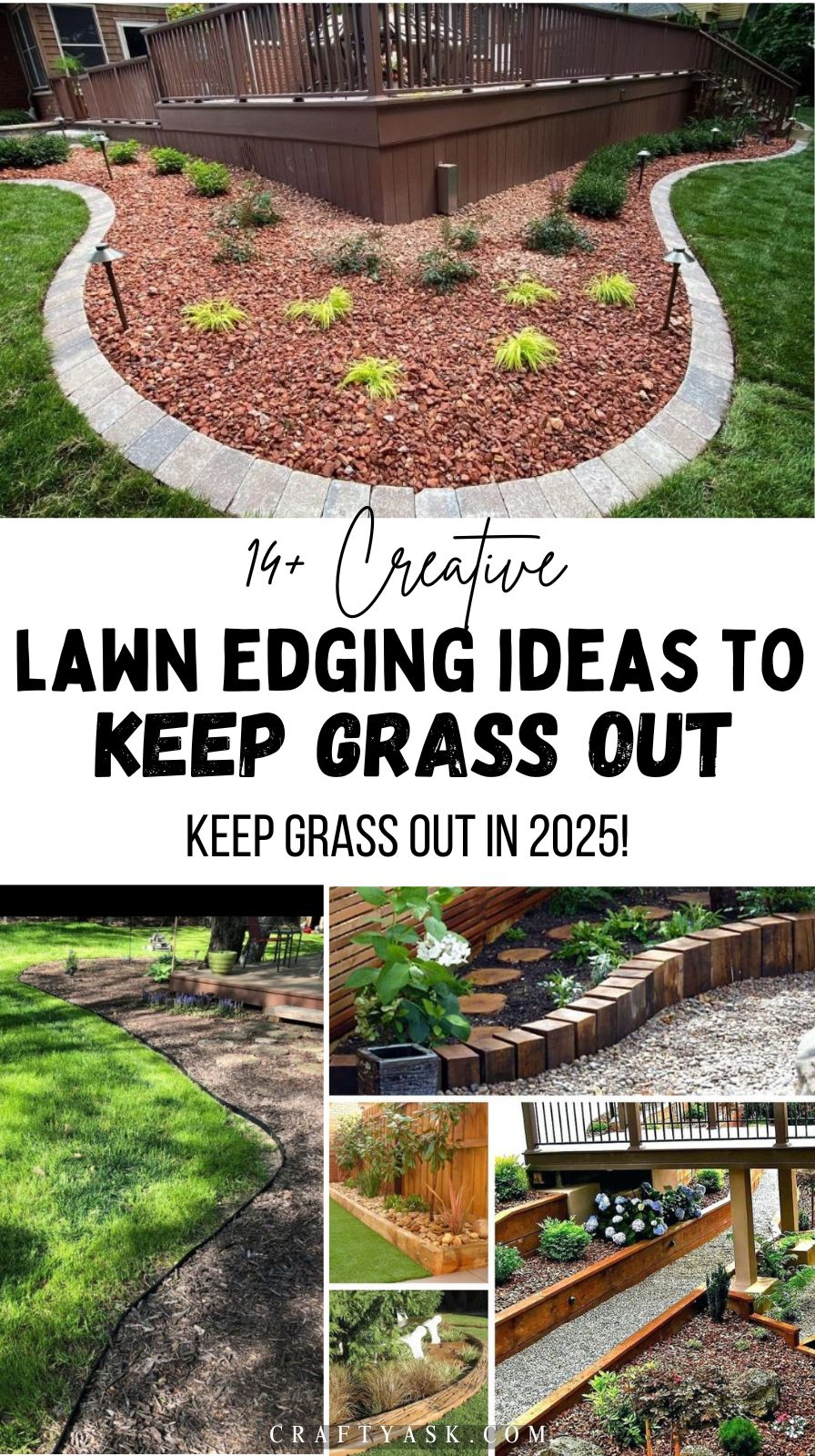
Principles Of Effective Lawn Edging
Lawn edging only works if it matches how grass actually spreads. You’ve got to know what you’re up against if you want to keep those garden beds looking sharp.
Understanding Grass Growth Patterns
Grass spreads two ways: above ground with runners (stolons) and below ground with roots (rhizomes). A lot of common grasses use both, which is why they can pop up in places you don’t want them.
Bermuda and Zoysia are especially sneaky, those runners let them cross or slip under borders with almost no effort. Even less aggressive grasses can find their way through cracks or small gaps in your edging.
So what’s the move? You need a barrier that blocks both runners and roots. Materials like metal, stone, or deep plastic borders are your friends here.
Burying your edging a few inches down and securing it with stakes can make a big difference. It’s all about stopping those roots from tunneling underneath.
Common Challenges With Lawn Borders
There are a few classic problems that let grass and weeds break through. The most common issues include:
- Shallow installation
- Poorly joined sections
- Weak materials (thin plastic, for example)
- Lack of maintenance
If your edging isn’t deep enough, roots can just slip right under. Any gaps between segments? Grass will find them, no doubt.
Weather and garden work can also shift edging over time, opening up new paths for grass. It’s a bit of a battle, honestly.
Using strong, solid materials like steel edging or thick stone gives you a better shot at keeping things neat. Regularly checking and clearing soil or mulch away from the border helps too.
Maintenance And Longevity Considerations
Lawn edging isn’t set-and-forget, it needs regular attention to stay effective. Small, consistent efforts go a long way.
Preventative Care For Lawn Edges
Adding a physical barrier under your edging, like landscape fabric or a weed barrier, is a smart move. It’s a simple trick that keeps grass roots from creeping into beds and paths.
Setting your edging at the right depth helps, too. Usually, you want the top to be level with or just above the grass. That way, mowing is easier and grass struggles to climb over.
If you’re using wood or mulch, check it now and then for rot. Swap out anything that looks worn to keep your grass barrier solid.
Seasonal Maintenance Strategies
Every season seems to bring its own set of chores for lawn edging. In spring, you’ll want to clear away debris and any old mulch that might block drainage or let weeds sneak in.
When summer rolls around, keep an eye out for new grass shoots poking through gaps. Trim or pull those up fast, and if the edging’s shifted, just press it back where it belongs.
Autumn? That’s a time for raking leaves and double-checking that your edging still looks solid after months of use. If you notice frost heaves or the soil pushing things around, it’s smart to fix that before winter hits.
Winter care is honestly pretty hands-off, mostly just watching for issues. Try not to use salts or harsh chemicals near the edging, since those can wear down stone or metal faster than you’d expect.
Regular checks each season really do make a difference for the longevity of edging materials, and honestly, they keep the whole maintenance thing from turning into a headache.
14+ lawn edging ideas to keep grass out
1. Metal Edging
- Bold Garden Divider: The slim, curved metal strip cleanly separates the textured planting bed from the crisp lawn, becoming a subtle focal feature.
- Streamlined Flow: This layout encourages easy navigation and neatly frames each plant grouping without disrupting.
- Material Blend That Works: The combination of steel edging, stone mulch, and soft green turf offers visual contrast and complements.
2. Plastic Lawn Edging
- Tree-Centric Design: The edging gracefully encircles a shaded garden bed under mature trees, anchoring the space visually.
- Curved for Calm: Flowing curves reduce harsh lines, giving the garden a more relaxed and nature-inspired structure.
- Material Connection: The edging mimics the natural shapes of branches and tree roots while contrasting nicely against bright grass.
3. Brick Edging
- Bold Visual Anchor: The structured edging highlights the transition between soft lawn and the raised wooden deck garden.
- Curves That Compliment: The sinuous lines soften the architecture’s edges, guiding the eye through the space with visual ease.
- Cohesive Material Palette: Light-colored brick edges balance the deep red mulch and wood-stained deck for a cohesive, inviting look.
4. Concrete Edging
- Sculptural Garden Border: This edging acts as a visual frame around the blooming landscape, enhancing the organic flow of the yard.
- Guides the Outdoor Journey: The gentle curve leads the eye toward the swing area and fosters an inviting, playful vibe.
- Clean Material Composition: Gray concrete with subtle veining adds contrast against mulch while staying grounded in earthy tones.
5. Paver Edging

- Clear Visual Boundaries: The paver line crisply separates gravel mulch from paved surfaces, adding definition to each zone.
- Effortless Navigation: The neat border provides a visual guide along curves and corners, helping visitors follow the layout.
- Blend in Sync: Gray pavers, warm stone gravel, and light paving tiles create a balanced palette of cool neutrals.
6. Wood edging
- Bold Garden Outline: These closely packed wooden rounds form a distinct, upright line that keeps garden beds in check.
- Practical Placement: Perfect for separating mulch from turf while holding soil in place for raised plantings.
- Softened Transitions: The rounded wood tips and uneven finish add rustic appeal without appearing too polished.
7. Rubber Edging
- Soft Meets Structured: The rounded shape delivers a polished appearance while minimizing sharp edges.
- Garden Flow Upgrade: This edging curves naturally with the shape of your flower beds, adding rhythm to your layout.
- Material Harmony: Rubber blends seamlessly with mulch while standing out just enough to define space boundaries.
8. Gravel or Rock Trench
- Natural Definition: The rock trench mimics a dry riverbed, anchoring the garden with its organic lines and tactile beauty.
- Enhanced Drainage Path: Designed to manage runoff while defining the edges of the landscape, especially in sloped yards.
- Long-Term Reliability: This low-maintenance edging solution stands up to seasonal changes and heavy use.
9. Stone Edging
- Low-Profile Accent: This edging stays low to the ground, offering a subtle yet effective separation between grass and plants.
- Controlled Growth Zones: Prevents grass from invading your plant beds and reduces mulch scatter after rainfall.
- Weather-Resilient Structure: Ideal for climates that experience seasonal shifts thanks to its interlocking durability.
10. Cobblestone Border

- Classic Elevation Accent: The cobblestone row defines the base of a raised bed, anchoring the landscape visually.
- Organic Stone Balance: Complements the natural stone retaining wall and muted gravel, keeping the palette consistent.
- Sturdy and Sustainable: With heavy stone construction, this edging resists shifting and weather damage year-round.
11. Concrete Curbing (Decorative)
- Decorative Garden Highlight: The patterned concrete border draws attention to blooming annuals and greenery with stylish precision.
- Defined Pathways: Helps shape the garden layout and encourages organized planting and maintenance.
- Bold Textural Play: The etched lines give the surface a hand-crafted feel that breaks up monotony in green spaces.
12. Lawn Edging Fence (Mini Fence)
- Delightful Garden Divider: This tiny white fence creates a beautiful visual pause between the lawn and floral displays.
- Guided Garden Flow: Offers a clear boundary that still feels open and airy, perfect for small or busy yards.
- Child-Friendly Protection: Acts as a soft barrier to protect low-lying blooms from playful foot traffic.
13. Landscape Edging Blocks

- Eye-Level Detail: Even from a distance, the bold texture and size of these blocks command attention as a clear landscape anchor.
- Structured Design Layout: Enhances bed definition and reduces yard clutter by organizing spaces visually.
- Ease of Installation: Easily stackable and repositionable for changing seasonal arrangements or layout tweaks.
14. Timber Edging
- Bold Linear Definition: The long timber plank provides a striking line that defines the planting area, guiding attention to the palm foliage.
- Controlled Layout: Keeps mulch neatly in place while preventing grass from creeping into your garden bed.
- Visual Unity: The wooden tones blend seamlessly with the organic mulch and echo the natural outdoor palette.

